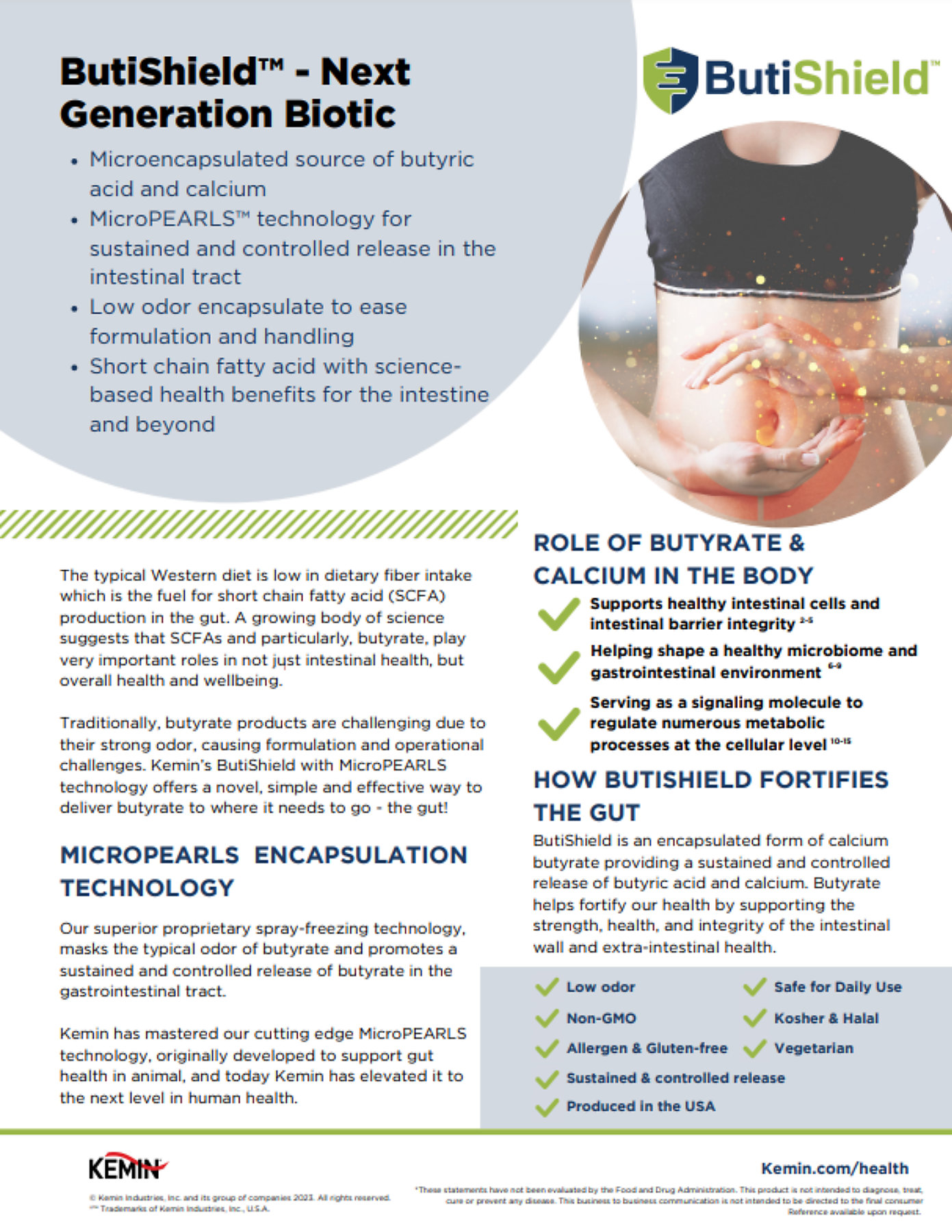ButiShield™ is an encapsulated low odor source of butyric acid designed for daily consumption. Providing a sustained release of >35% butyric acid, this unique ingredient offers science-based health benefits for the strength, health, and integrity of the intestinal wall, leading to health benefits beyond the intestine.
Science-Backed Benefits
Backed by scientific evidence, Butyrate operates as a main energy source for maintaining the vitality of intestinal cells and upholding the integrity of the intestinal barrier.1-5 Additionally, Butyrate contributes to shaping a favorable microbiome and gastrointestinal environment.6-9 Acting as a signaling molecule, it regulates a multitude of metabolic processes at the cellular level.10-15 In essence, Butyrate offers:
- Support in shaping a healthy microbiome and maintaining a balanced gastrointestinal environment.7-9
- Vital energy supply for sustaining the health of intestinal cells.2-5
- Assistance in preserving the integrity of the intestinal barrier.2-5
- Promotion of an overall healthy gastrointestinal environment.6-9
Why Choose ButiShield?
- MicroPEARLS™ Technology: Our proprietary spray-freezing technology minimizes the typical unpleasant odor of butyric acid making it easier for manufacturers to use in production. MicroPEARLS also promotes a sustained release in the gastrointestinal (GI) tract for maximum benefit.
- 60 Years of Expertise: With over 60 years of expertise, Kemin has fine-tuned and mastered encapsulation technologies, elevating MicroPEARLS technology to the next level in human health.


%20(1)?$imageGallery$)
?$imageGallery$)





